Ophelia is a captivating character, one that inspired many of the Pre-Raphaelites and other Victorian artists.
For those unfamiliar with Ophelia, she is Hamlet’s innocent young love interest in one of Shakespeare’s most popular plays, Hamlet.
Hamlet loved Ophelia – but after his meeting with the ghost of his father (Act I) he feels compelled to set their love aside in order to focus on avenging his father’s murder.
Poor Ophelia is unaware of Hamlet’s motives or his inner turmoil. He chooses not to express his sense of betrayal (and who can blame him for feeling betrayed when his uncle murdered his father and then married his mother, Queen Gertrude).
Ophelia is perplexed and hurt by Hamlet’s madness — and when Hamlet kills Ophelia’s father, Polonius, in an irrational fit, Ophelia is herself driven to insanity.
Picking flowers and singing songs, Ophelia accidentally drowns. Perhaps the most famous painting of Ophelia is by John Everett Millais, using Elizabeth Siddal as a model. Siddal took great pains to pose as Ophelia:
“Miss Siddal had a trying experience whilst acting as a model for Ophelia. In order that the artist might get the proper set of the garments in water and the right atmosphere and aqueous effects, she had to lie in a large bath filled with water, which was kept at an even temperature by lamps placed beneath. One day, just as the picture was nearly finished, the lamps went out unnoticed by the artist, who was so intensely absorbed in his work that he thought of nothing else, and the poor lady was kept floating in the cold water till she was quite benumbed. She herself never complained of this, but the result was that she contracted a severe cold, and her father wrote to Millais, threatening with an action of 50 lbs. for his carelessness. Eventually the matter was satisfactorily compromised. Millais paid the doctor’s bill, and Miss Siddal, quickly recovering, was none the worse for her cold bath.” — The son of the artist, John Guille Millais
, describing the incident.
(For more on the painting by Millais, see the Ophelia page on my site LizzieSiddal.com and Ophelia’s Flowers.
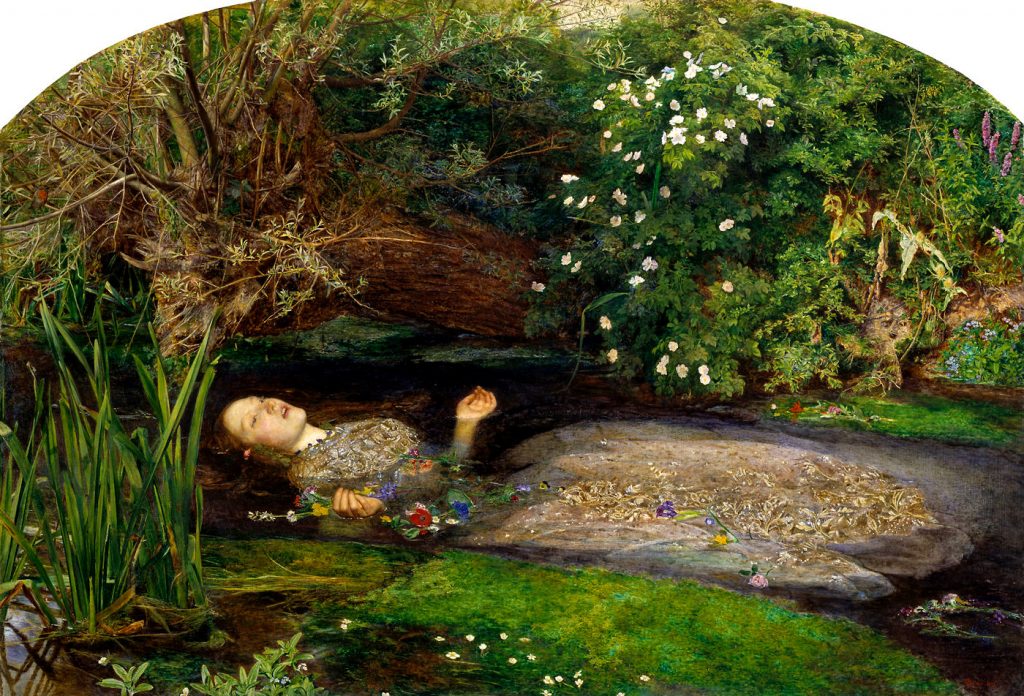
Dante Gabriel Rossetti chose to portray Ophelia in a different way, drawing inspiration from the passages I’ve transcribed below
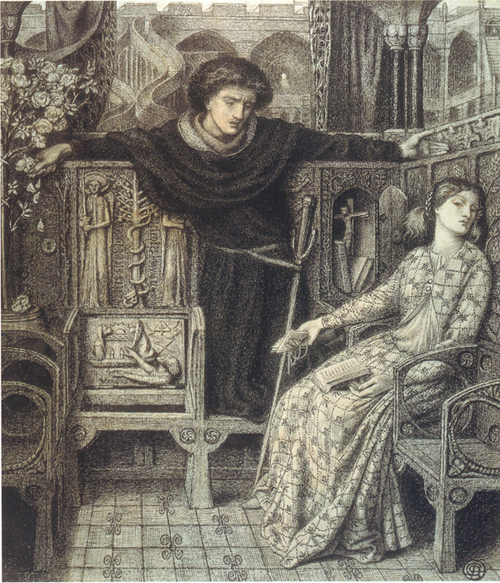
HAMLET: I did love thee once. OPHELIA: Indeed, my lord, you made me believe so. HAMLET: You should not have believed me; for virtue cannot so inoculate our old shock but we shall relish of it: I loved you not. OPHELIA: I was the more deceived. HAMLET: Get thee to a nunnery, why wouldst thou be a breeder of sinners? I am myself indifferent honest, but yet I could accuse me of such things...
Arthur Hughes painted this version of Ophelia in 1852. Hughes shows Ophelia beside the stream that will eventually take her life. The water seems stagnant with a slimy film on top. On the right hand side of the painting (just under the tree trunk) there is a bat flying close to the surface of the water.
The above depiction by Hughes is a bit faerie-like and elfish but Hughes was not done with our beloved Ophelia yet, it seems. He painted her again, this time depicting her in the moments of madness before she reaches the stream.
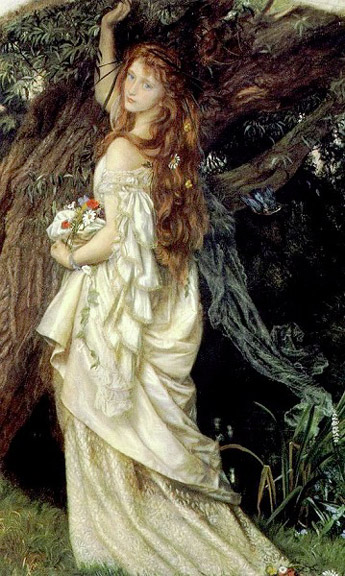
Other artists painted their own versions of Ophelia, including John William Waterhouse who revisited Ophelia repeatedly:
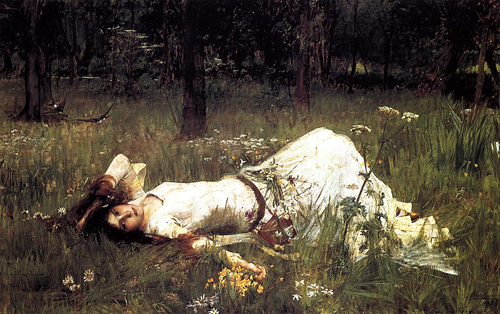
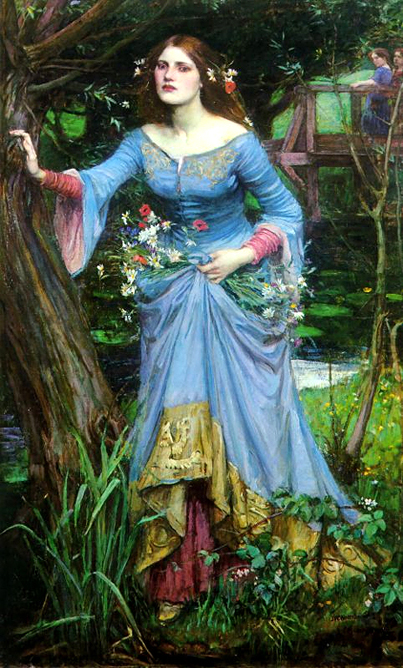
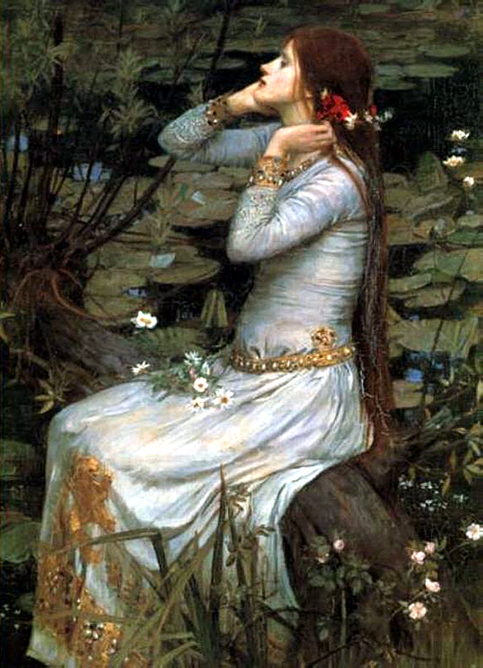
The following are my favorite lines from Hamlet….Hamlet’s words, written to Ophelia in Act 2, Scene 2:
Doubt thou the stars are fire; Doubt that the sun doth move; Doubt truth to be a liar; But never doubt I love.
The italics are mine; this is one of my favorite lines.
Hamlet eventually went mad and denied his love (in an attempt to protect Ophelia?) but these words of his allow us to look back and see Hamlet and Ophelia before the murder, chaos, and drama and see them simply as two young people in love.
And then Ophelia, driven insane, dies.
QUEEN GERTRUDE: There is a willow grows aslant a brook, That shows his hoar leaves in the glassy stream; There with fantastic garlands did she come Of crow-flowers, nettles, daisies, and long purples That liberal shepherds give a grosser name, But our cold maids do dead men's fingers call them: There, on the pendent boughs her coronet weeds Clambering to hang, an envious sliver broke; When down her weedy trophies and herself Fell in the weeping brook. Her clothes spread wide; And, mermaid-like, awhile they bore her up: Which time she chanted snatches of old tunes; As one incapable of her own distress, Or like a creature native and indued Unto that element: but long it could not be Till that her garments, heavy with their drink, Pull'd the poor wretch from her melodious lay To muddy death. LAERTES: Alas, then, is she drown'd? QUEEN: drown'd. drown'd LAERTES: Too much of water hast thou, poor Ophelia, and therefore I forbid my tears.

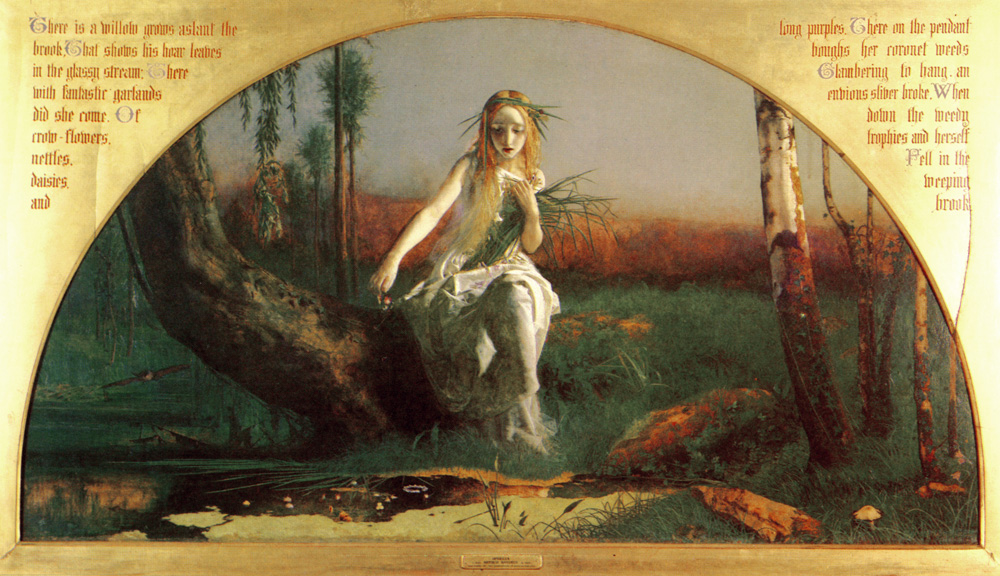
There’s a beautiful poem by Arthur Rimbaud about Ophelia that begins…
Sur l’onde calme et noire
Ou dorment des etoiles
Ophelie flotte comme un grand lys…
(On the calm black wave
Where sleep the stars,
Ophelia flottes like a great lily…)
I agree that these are lovely lines… a hint of a sonnet Shakespeare never wrote perhaps.
“Doubt thou the stars are fire;
Doubt that the sun doth move;
Doubt truth to be a liar;
But never doubt I love. ”
I used that idea to write a sonnet for my ex and she loved it.
Hi Stephanie, Phil put me on to your page. I have a query, the Arthur Hughes version of Ophelia; who was the model he used, I cannot find it anywhere. Could it have been Elisabeth Siddel as well. They certainly look similar. They list Hughes wife for his later works but make no mention of the Ophelia painting. Any info you could provide would be appreciated. John Berry.